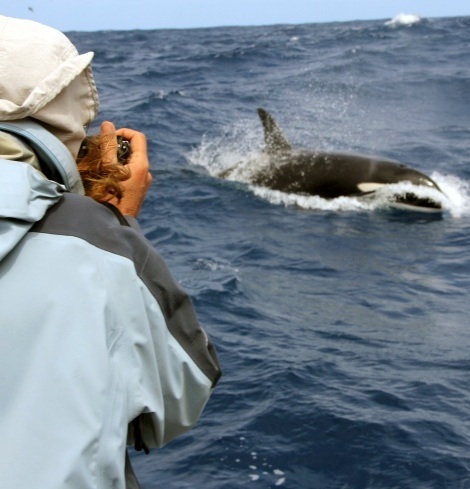Killer whales learn how to speak dolphin
Killer whales are known for their haunting songs consisting of complex whistles and clicks, but they can also learn “dolphin speak,” a new study finds. Most animals communicate with innate sounds, such as the barking of dogs and the gobbling of turkeys. But some species, humans, for example, can imitate new sounds and learn how to use them correctly in social situations. This ability, called vocal learning, is one of the foundations of language. Researchers have evidence that killer whales (Orcinus orca) can learn vocalizations from other species. When killer whales were socialized with bottlenose dolphins at a water facility, they changed the types of sounds they made to resemble those of their social partners, the study found.
There’s been an idea for a long time that killer whales learn their dialect, but it isn’t enough to say they all have different dialects so therefore they learn. There needs to be some experimental proof so you can say how well they learn and what context promotes learning.
Ann Bowles, a senior research scientist at Hubbs-SeaWorld Research Institute
Killer whale vocalizations include clicks, whistles and pulsed calls that sound like short spurts of sound followed by silence. However, the duration, pitch and pulse pattern varies across pods, suggesting each whale group has a unique dialect. The killer whales’ vocal learning abilities don’t necessarily mean that cetaceans have language in the same way that humans do, the researchers said. But the whales’ skills do indicate a high level of neural plasticity, meaning their brain circuits can change to incorporate new information. These marine animals may have an advantage if social bonds are tied to learned vocalizations from other species, the researchers said. Such a bond could help the animals survive amid different territories and social groups, they said.

Science